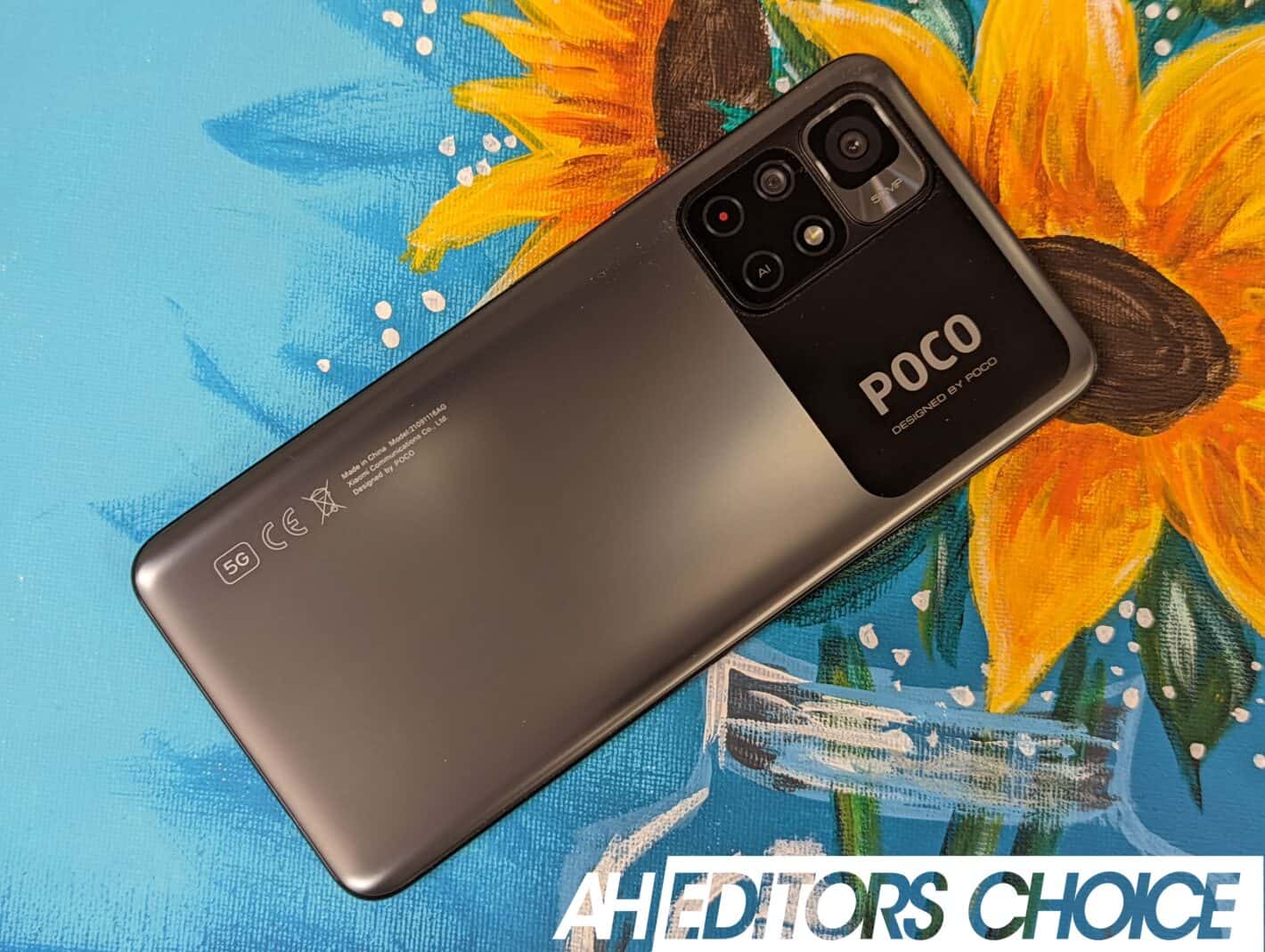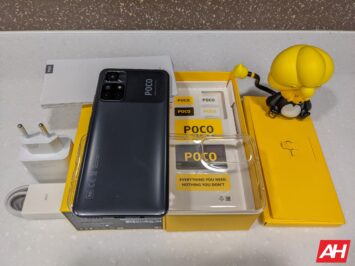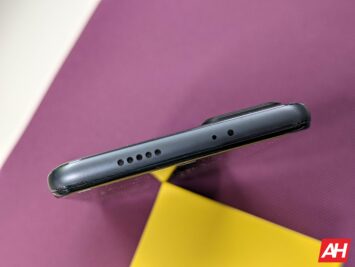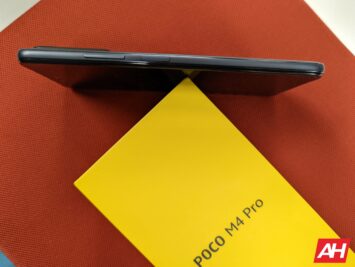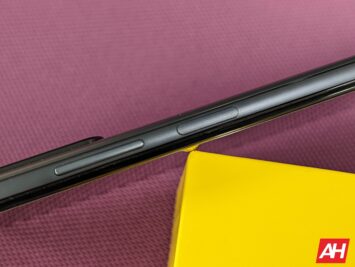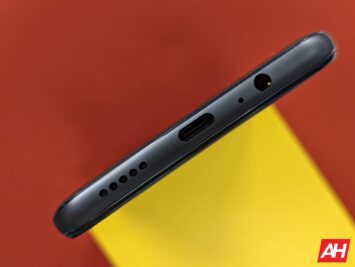Poco M4 Pro 5G is now available worldwide. The string of hits from the Xiaomi sub-brand continues with the Poco M4 Pro 5G.
Last year AndroidHeadlines did a review of the Poco M3 and called it the best budget phone of 2020. So arguably the M4 has big shoes to fill. Now since Xiaomi/Poco sent us a variety of other Poco devices to review in 2021 we decided to skip the 5G version of the M3 that launched mid-2021.
However, when the request to review the new Poco M4 Pro 5G came through, we jumped at the chance to see if the new 5G version had the same unbeatable price to performance ratio as last year’s 4G model. Let’s dive into the full review to see if the Poco M4 Pro 5G is the best 5G budget phone money can buy or not?
Poco M4 Pro 5G Unboxing
Some things don’t change with time. This applies to the yellow cardboard box. Inside we still have a yellow insert with a TPU case, SIM tool and paperwork. Below the insert is the (predictably) Power Black Poco M4 Pro. Underneath the phone is a 33W charging brick, and a USB-C cable. No freebie knick-knacks inside the box anymore.
Design and build quality are excellent on the Poco M4 Pro 5G
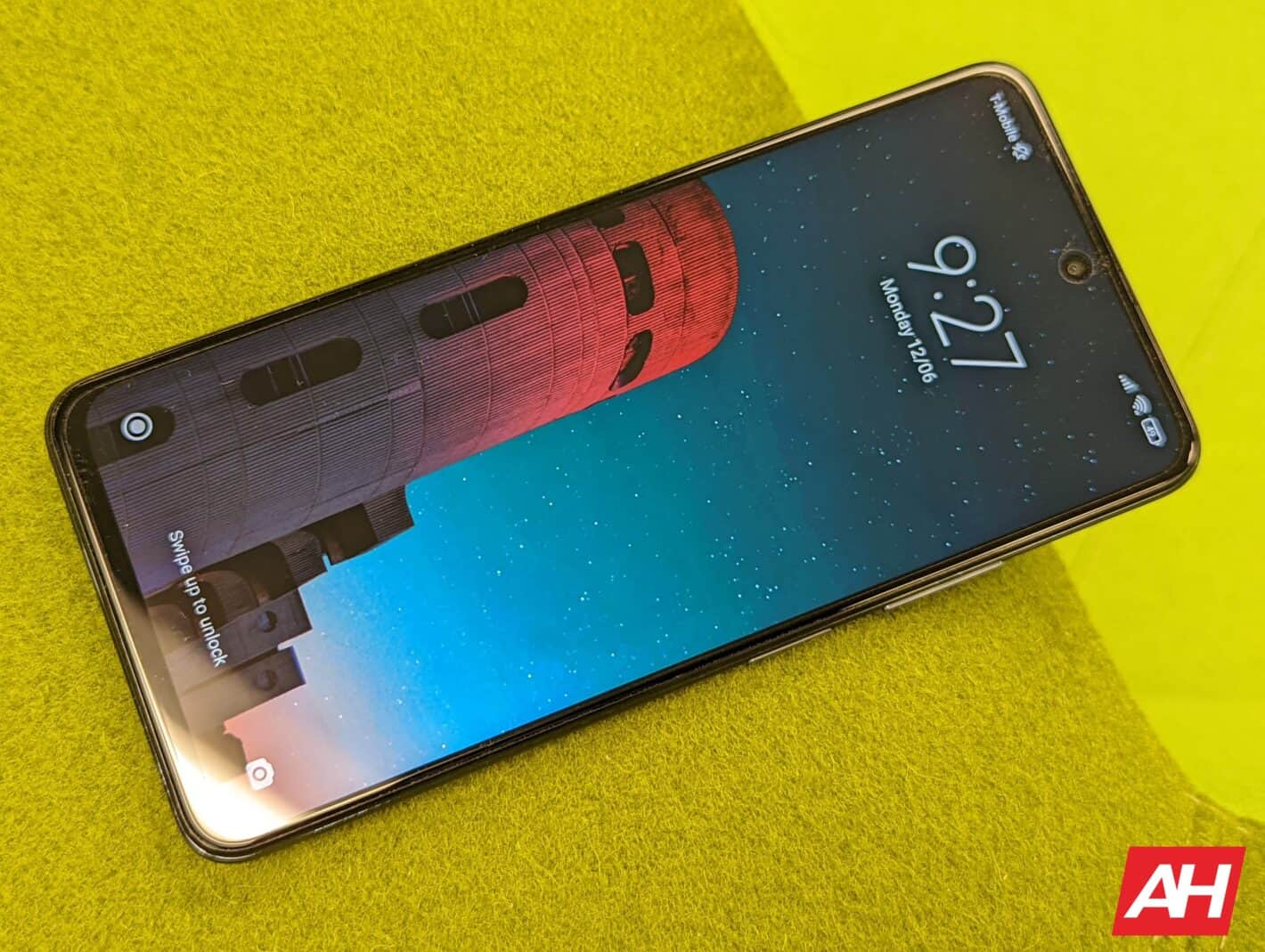
The Poco M4 Pro 5G is still a large phone. Dimension wise it is roughly the same size as the M3 but Poco managed to squeeze in a slightly larger 6.6″ screen somehow which is nice. Also, most phones in this price category still have a teardrop in the middle so kudos to Poco for putting in a hole punch 90Hz refresh rate LCD panel in the M4 Pro.

There’s still a plastic frame with a light texture plastic back. Personally, I prefer the TPU finish on the M3 in comparison with the new back cover on the M4 Pro. The new back tends to pick up smudges and gets marks quite easily. It is an absolute nightmare of a device to keep it dust and lint-free. The best course of action is to use it with the factory case that comes in the box. I like the evolution in the two-tone and Poco logo on the back of this device however as it looks a bit more elegant in comparison with last year’s device.
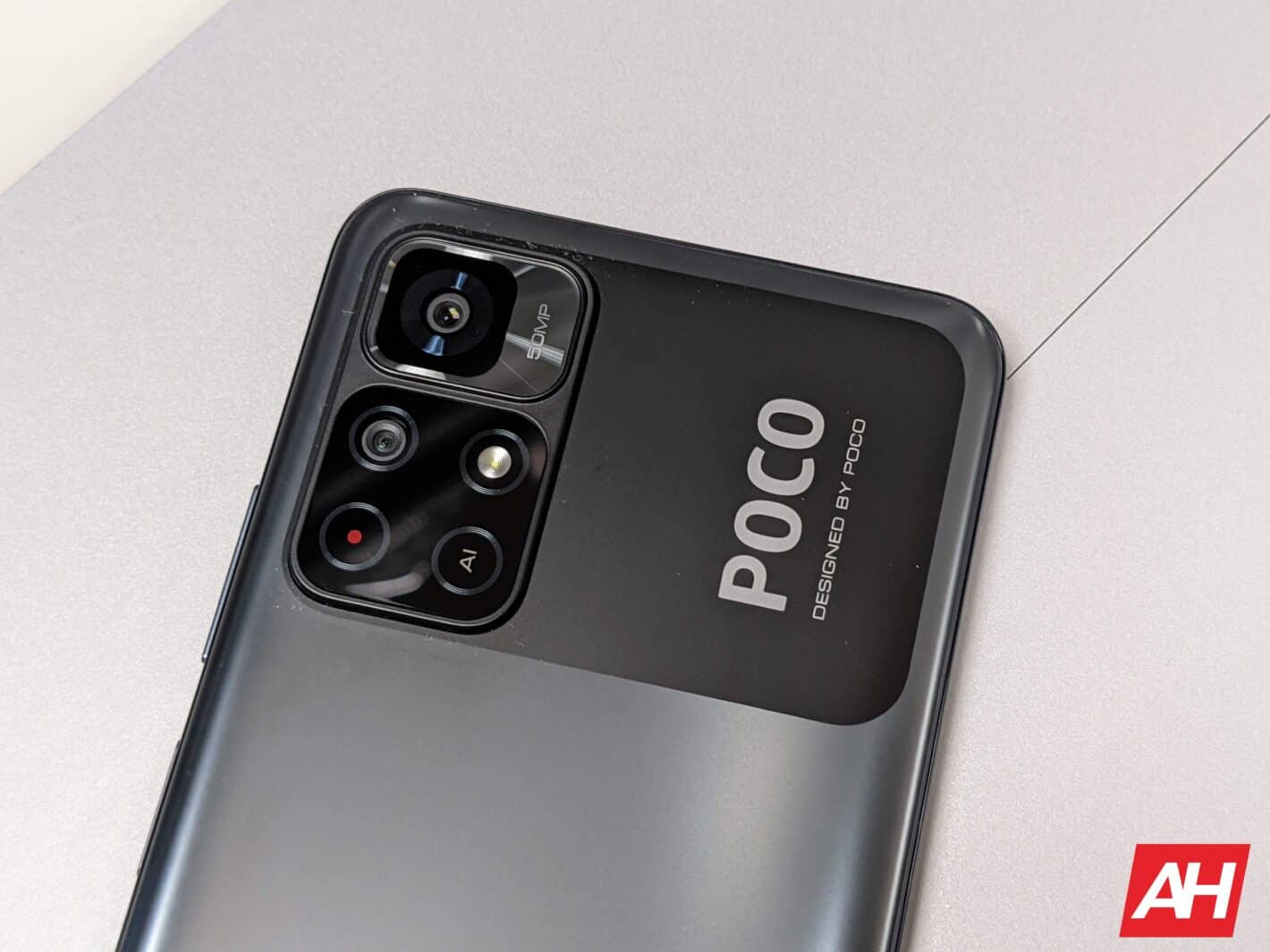
The camera module looks quite fancy but only has two cameras but both are a serious upgrade over last year’s device. More on that in the camera section of this review. The top frame of the device has a speaker grille, microphone, and IR blaster. The headphone jack is now on the bottom of the device along with the USB-C port, speaker grille, and main microphone.
Dual speakers and dual microphones are almost unheard of at this price range but this is Poco so not a surprise to see them in the M4 Pro 5G. Speaking of dual, there is a hybrid dual-SIM tray slot with SD card support on the left-hand side frame. The FPS power button and volume rocker are on the right-hand side frame of the device. The SIM tray slot has a silicone rubber gasket indicating some IP protection which is always welcome.
Overall it looks like a modern smartphone with a hole-punch display and a two-tone back cover. To top it off it has a good weight distribution for one-hand use. It comes in various colors and once again I just wish that Poco sends us reviewers the colorful versions to review.
90Hz refresh rate 6.6″ LCD display is one of the better ones in this segment

While most of the Xiaomi devices now have AMOLED displays Poco is still keeping the LCD panel on the new M4 Pro. But this time around it is a slightly larger 6.6″ 90Hz refresh rate display. Not cutting edge but still way better than the competition considering the price.
The panel on the Poco M4 Pro 5G is 1080 x 2400 FHD+ that results in 399 ppi density. You get 90Hz adaptive refresh rate along with 450 nits of brightness on the display panel. Finally, the panel on the Poco M4 Pro 5G supports DCI-P3 colors and a markedly improved 240Hz touch sampling rate. All of these features are pretty much unheard of in the budget smartphone category so as usual Poco has tried to cram in really good hardware at an attractive price point.
Here in Southern California on bright sunny days, I had no issues with outdoor visibility. The only thing that is missing here is HDR support but I am pretty sure somehow Poco will cram that feature next year. For now, the display panel is very nice and performs admirably indoors and outdoors.
For my review, I left the refresh rate at 90Hz (supposedly it is dynamic) and the color scheme at Vivid. Poco uses Gorilla Glass 3 on the display to protect it against scratches and cracks. As usual, there is a film screen protector from the factory on the phone. It isn’t the best but will keep the phone protected until you get a better aftermarket version.
All-day battery life on the Poco M4 Pro is easy
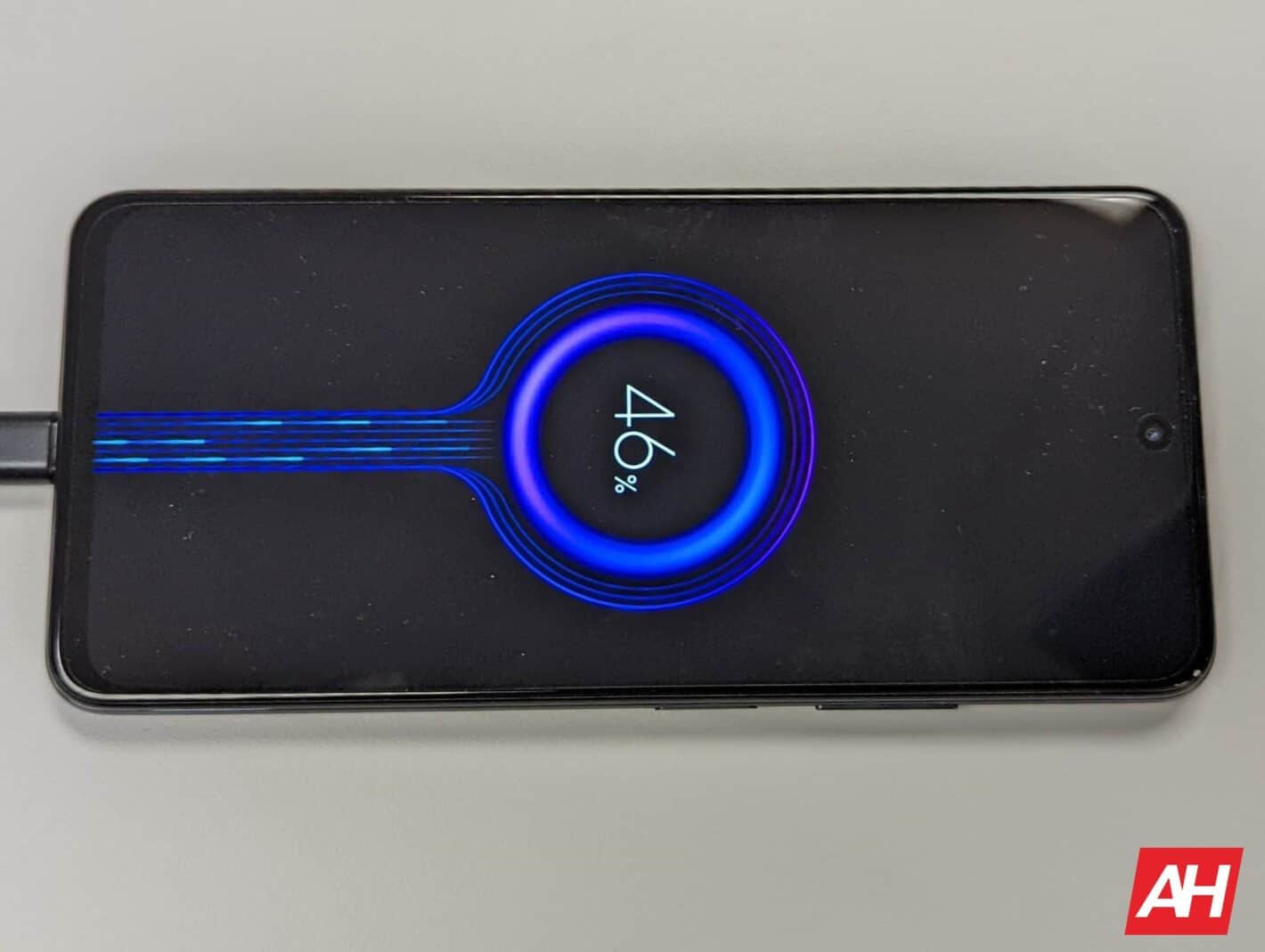
The Poco M4 Pro 5G has a large 5,000mAh battery, with fast 33W charging, and yes you get the power brick inside the box. Battery life thanks to the newer processor is excellent. With general use – calls, music/video streaming, web browsing you can easily go from dawn to late night. You will not have to reach for the charger during the day unless you decide to play games for 4 hours straight.
For best results though use the 3A rated USB-C cable in the box along with the factory 33W charging brick. Xiaomi promises a full charge in about an hour. You can expect 0-50% in just under half an hour which is great in case you don’t have time to charge the phone fully. The only feature missing is that the Poco M4 Pro 5G does not support reverse wired charging unlike the M3 from 2020.
Performance is more than adequate on the Poco M4 Pro
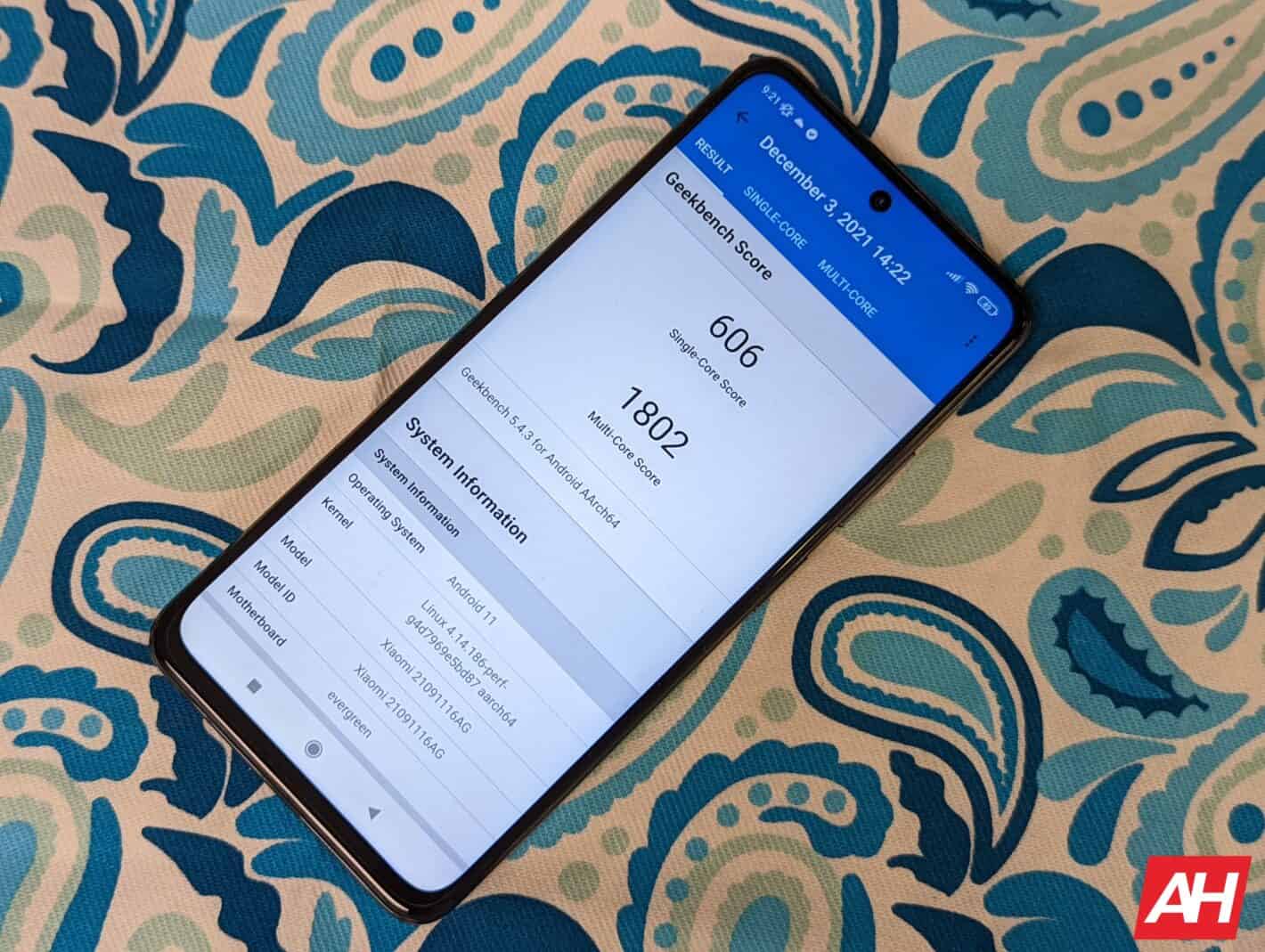
The Poco M4 Pro 5G uses the 6nm MediaTek 5G chip – the Dimensity 810. The Dimensity 810 5G chip packs an octa-core processor with 2x 2.4GHz Cortex-A76 and 6x 2.0GHz Cortex-A55.
The big A76 cores clock has been increased from 2.2GHz up to 2.4GHz. However, the Mali-G57 MC2 GPU clock speed drops from 950MHz to 850MHz. This is a bit surprising. And finally, the new Dimensity 810 has an improved 5G modem and Image processor.
Poco is selling the M4Pro 5G in two versions, both with LPDDR4X RAM and UFS 2.2 storage – 4GB/64GB and 6GB/128GB. The review unit is the higher RAM and base storage version.
Benchmarks are quite good for a budget smartphone. During daily use though the phone doesn’t seem to slow down or heat up. Thermal management is also quite good during long stretches of video playback or gaming.
Speaking of gaming the Poco M4 Pro should be fine as long as you tweak game graphics and settle for 30fps. Aside from this for other daily tasks you don’t need to tweak any settings for optimal performance.
Software MIUI 12.5 out of the box on the Poco M4 Pro
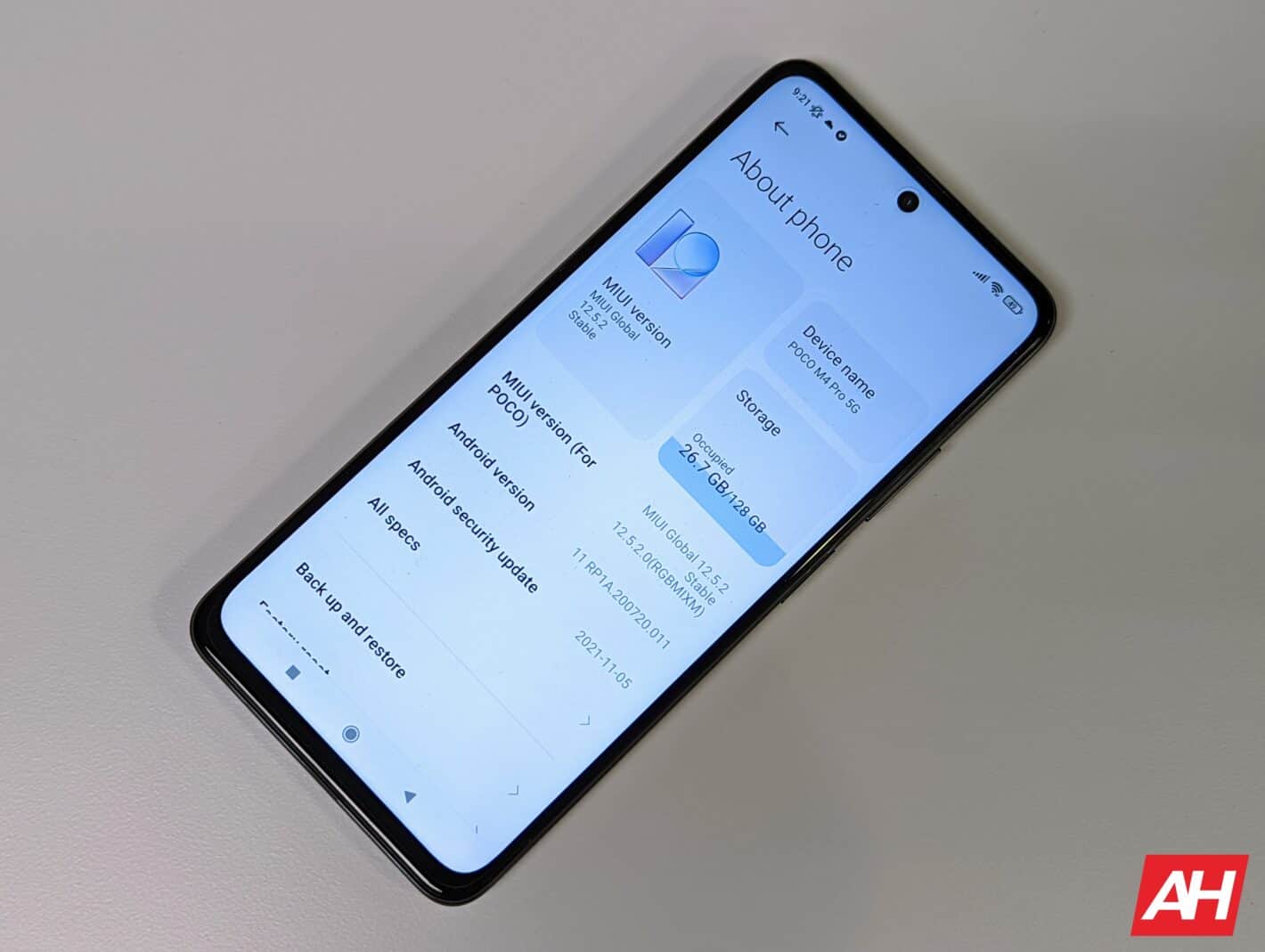
My review unit of the Poco M4 Pro 5G is running Android 11 via MIUI 12.5. For a while, though I feel the MIUI changes are small and incremental. We have reviewed a lot of Xiaomi/Poco devices in the last 12 months so this section is going to be short.
Basically this version isn’t too much different than the MIUI on the Poco X3 GT from a few months ago. Of course, Poco has its own launcher along with the classic Limitless MIUI launcher. And yes since this is a budget device expect ads especially when using the Cleaner app.
My personal suggestion is to go into Settings/About for Themes, File Manager, Security, and Cleaner apps and turn of Recommendations/Ads as applicable. This may not eliminate the ad popups completely but should reduce them by over 90%. The Cleaner app seems to be the worst of these all in turning off the recommendations for app installs.
It is a pity that this annoyance continues to plague the budget Xiaomi/Poco phones. But I guess they need to make money somehow since the hardware is basically being sold at rock bottom prices.
Dual Cameras that produce reasonably good still pictures under various lighting conditions
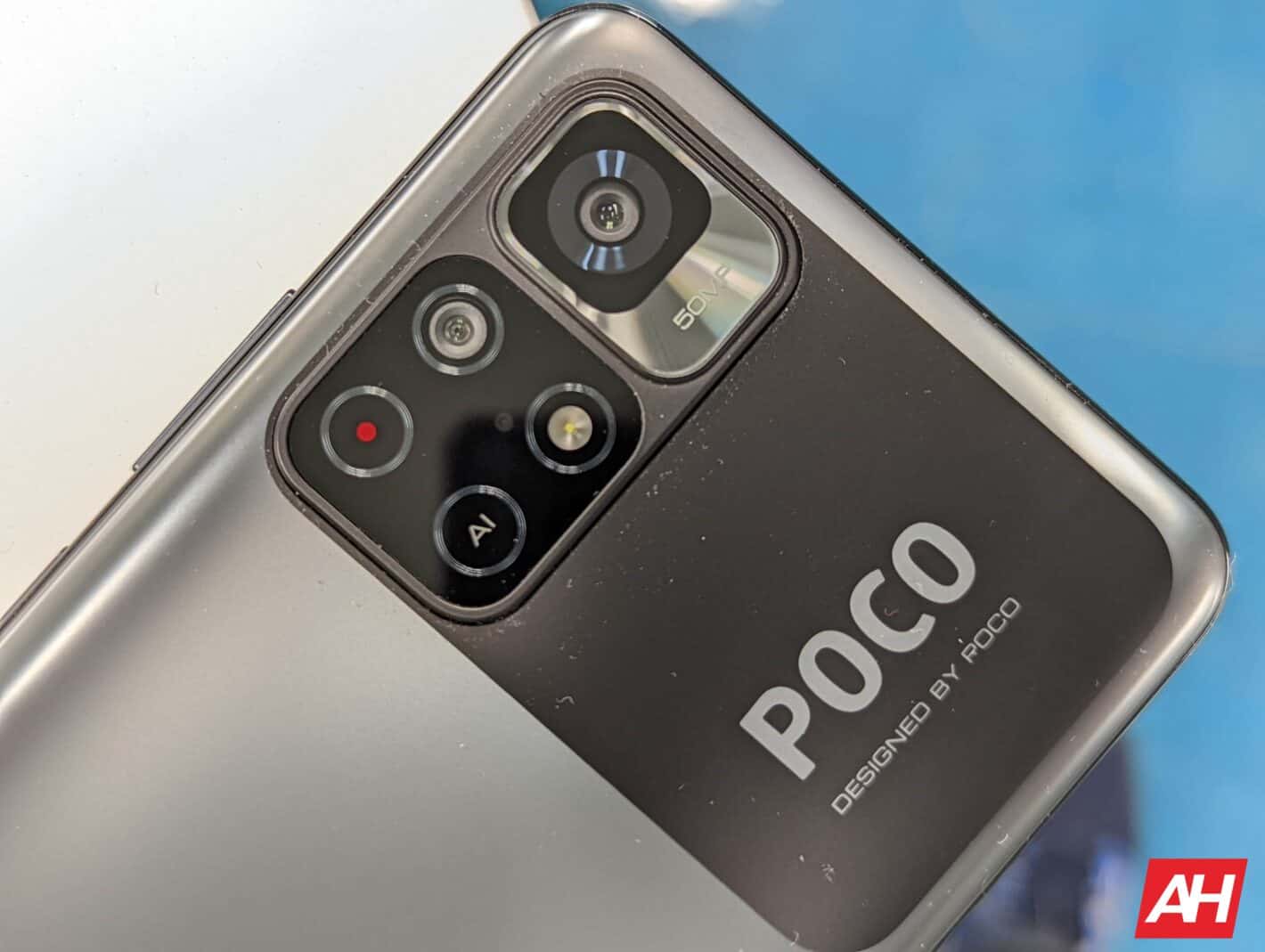
Let’s clear the air about one less camera on the rear than the previous version on the Poco M4 Pro 5G. To be honest most of us would rather have two great working cameras – main and ultrawide – than one main camera and two lousy 2MP depth and macro cameras.
Don’t be fooled by the big rear camera module layout on the back. Besides the two cameras, the other circles house the LED flash, AI logo, and just a red dot. So it is great that the Poco M4 Pro has a 50MP main camera and an 8MP ultrawide snapper. On the front, the selfie camera is a new 16MP which is a bump up from the 8MP on the M3 Pro 5G.
Tech specs-wise, the main camera is a 50MP Samsung ISOCELL S5KJN1 1/2.76″” sensor with Tetracell filter and 0.64µm pixels. The sensor uses an f/1.8 lens and supports PDAF and is capable of Night Mode.
The ultrawide camera uses an 8MP Sony IMX355 sensor behind f/2.2 lens. Unfortunately, Night Mode is NOT supported on the ultrawide camera. Meanwhile, the selfie camera is a 16MP 1/3.06″ OmniVision OV16A1 sensor with 1.0µm pixels, fixed focus f/2.5 lens, and a Quad-Bayer filter.
Sure there are changes to the camera hardware, but what hasn’t changed is the default camera app. The various modes can be accessed by swiping left and right. From Photo mode you can access 0.6X, 1X, and 2X digital zoom. In the More section, you can access other modes including Night Mode. I just wish that the Night Mode came on automatically like higher-end Xiaomi devices along with auto HDR.
Poco M4 Pro 5G Camera Samples - Flickr Gallery
Day and night time results from the Main Camera are great for this budget class
I was quite happy with the results from the main camera in terms of color, contrast, and dynamic range. The detail and sharpness aren’t that great but for social media sharing the results are quite acceptable. AI mode will bump up colors and contrast depending on the scene and you can choose to use it or post-process pictures via Snapseed. 2X digital zoom pictures are also more than good and I suspect that there isn’t just cropping in but some type of algorithm-driven upscaling going on. Regardless of the wizardry, you will be happy with the results.
The low-light photos are quite good but side by side comparison with Night Mode pictures indicates that you are better off using the Night Mode more often than not. Again you need to take the price of the device into consideration when looking at these pictures. I think most folks buying the Poco M4 Pro 5G will be happy with the output from the main camera in various lighting conditions.
Ultrawide camera results are good in daylight
The 8MP ultrawide photos are probably some of the best in the budget class. Detail is consistently good, very low barrel effect at the edges along with low noise. Contrast, color and dynamic range are also good.
This entire narrative turns upside down in low-light though as the pictures are soft and very noisy. If there is some street light then you may get good colors and perhaps decent contrast. But I would shy away from using the ultrawide camera after sunset. Of course as mentioned earlier, there is no Night Mode for the ultrawide camera.
Quick roundup of Selfies, portraits, and Video
Selfie cameras have been the weak spot for Xiaomi phones for a while. That doesn’t change with the M4 Pro despite a newer 16MP unit in the front. Color, contrast, and dynamic range are good. But the pictures look soft despite reasonable noise level and good sharpness. If you are viewing the results on the M4’s screen you will be happy just don’t try peeping at them on a large 22 inch monitor.
Portrait mode now uses AI because there is no dedicated depth sensor. Results are quite good with the main camera in daylight. Portraits are colorful, contrast and sharpness are on point and blur isn’t too aggressive.
Video is 1080p @30fps with electronic stabilization. Stick to the main camera for video mode and you will be happy with the results mainly in daylight. Ultrawide videos aren’t that great in quality. Video mode results start to show very clearly that this is a budget device. But if you take more photos than video you will be happy with what the Poco M4 Pro has to offer.
Audio is way better than the competition

There are two speakers with dedicated grilles on the Poco M4 Pro 5G. When you play music on Spotify or any other streaming service you can hear the output from both the speakers. The audio output from the bottom speaker is a bit louder than the top speaker though.
Audio quality is quite good in terms of highs and low notes. Mid-range is not as great but the overall sound quality is loud and punchy. In my opinion, this device is probably one of the best budget smartphones in terms of audio quality with this dual stereo speaker setup.
Headphone jack audio output is good albeit it does require cranking the volume up to around 70% output level. Bluetooth audio output doesn’t suffer from this minor glitch though as I could hear the music plenty loud at around 40% output. So something to keep in mind if you plan to use wired headphones with the M4 Pro.
Connectivity is excellent for a global unlocked smartphone
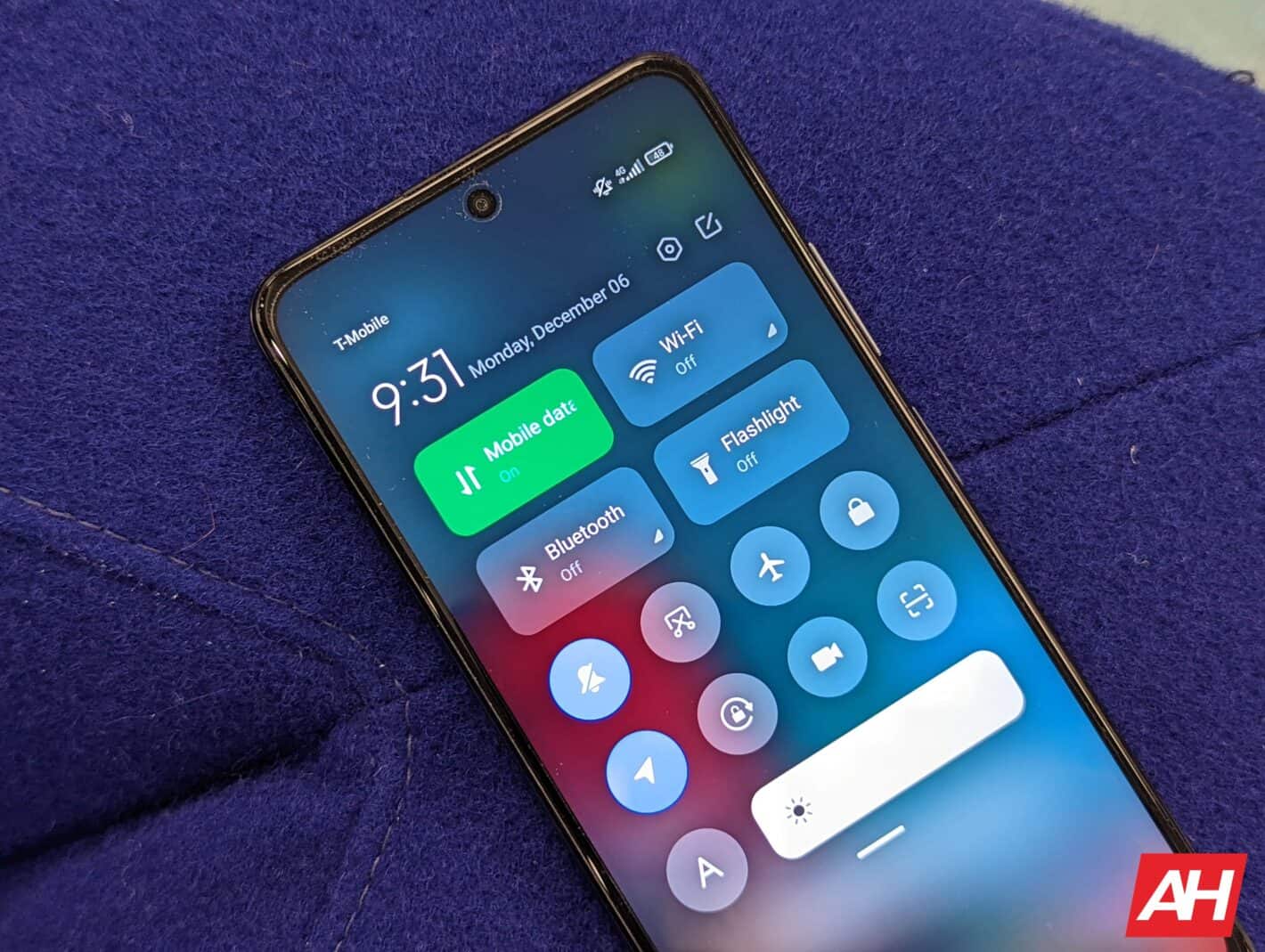
Officially I didn’t get the 5G symbol on the Poco M4 Pro 5G on the T-Mobile network in Southern California. But I consistently got LTE+ and download speeds compared well to my daily driver which is a Pixel 6.
Poco also has a lot of other connectivity items with the latest specs and these include – Bluetooth, Mi Share, Nearby Share, Cast, and IR Blaster. My review unit has NFC and I had no trouble using Google Pay on it. However, there is a weird software bug if NFC is left on in terms of a never going away notification icon. I hope Poco/Xiaomi fix this via a future software update.
Poco M4 Pro 5G Final Verdict
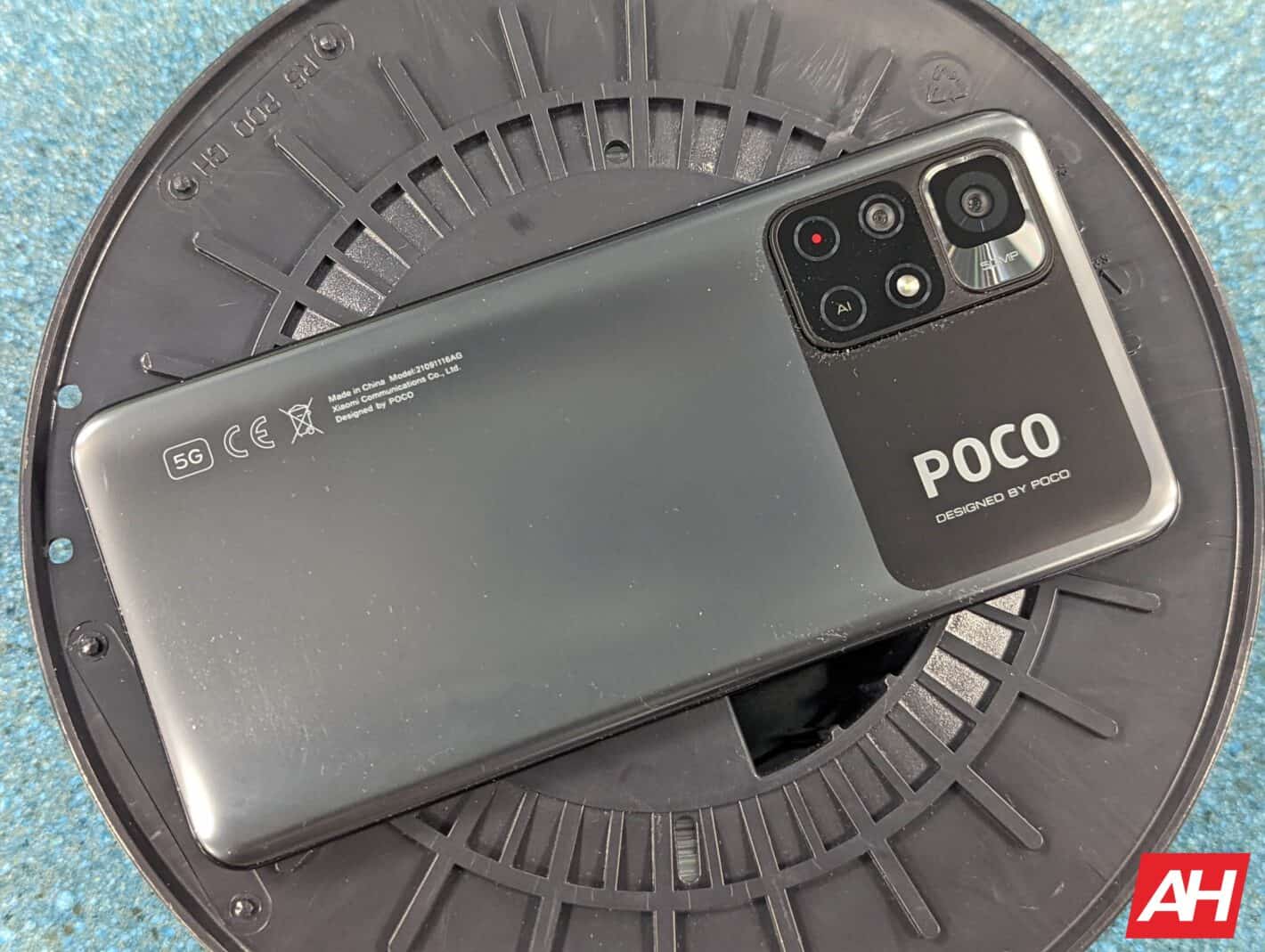
Superb performance at an affordable price is Poco’s business model. And it is refreshing to see a company pay attention to the little details even on their entry-level smartphone. Poco M4 Pro 5G nails all the basics right – good design, bright display, great battery life, great performance, and good rear cameras.
Sure the M4 Pro 5G is a bit more pricey than the M3 but you get an ultrawide camera, IP53 certification for dust and splash resistance, NFC, and 33W fast charging. I think for people whose only computing device is a smartphone and money is tight the Poco M4 Pro 5G is an excellent choice. The M4 Pro 5G is a stellar budget smartphone from Poco, probably one of the best budget devices for 2021.
 Newsletter
Newsletter

